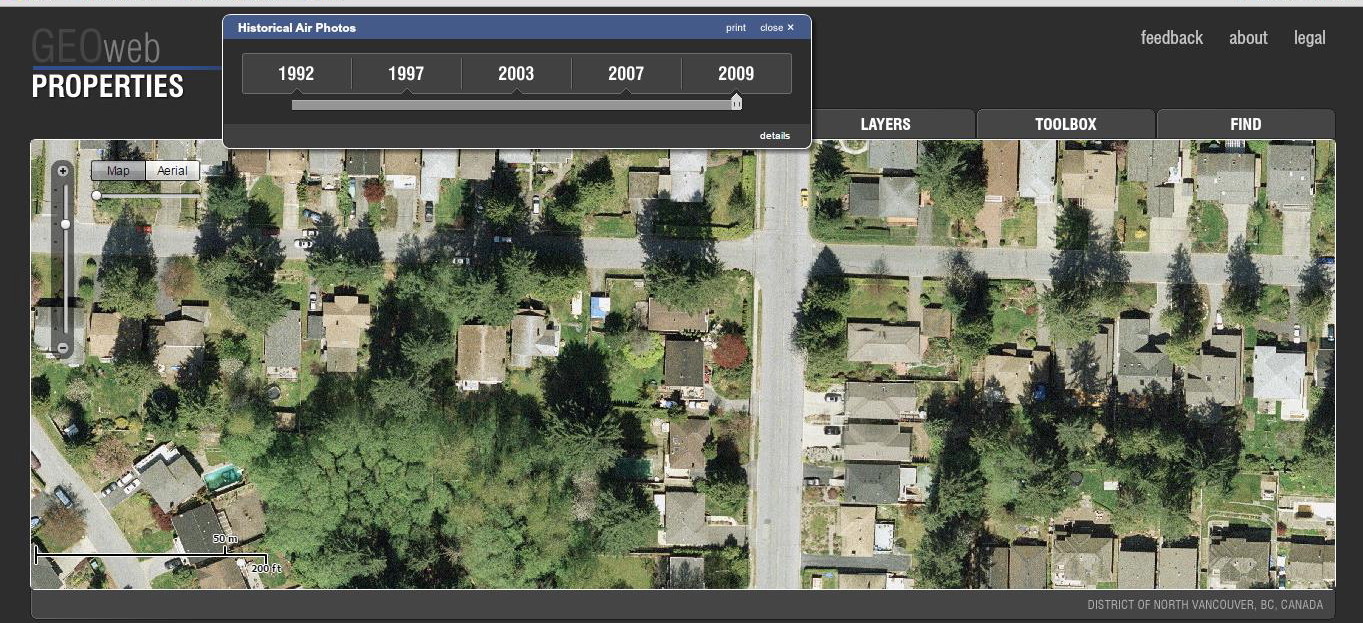“The innovative online format of GEOweb and the WBM Express makes them very accessible,” reports Julie Wilson, instructor in Urban Watershed Management at UBC
Note to Reader:
Funded by Metro Vancouver and a federal-provincial program for climate change adaptation, the Water Balance Model Express for Landowners is a web-based scenario and decision support tool. It provides local governments with the capability to protect stream health by implementing water balance targets at the site scale. This means slow, sink and spread rainwater.
Now, the “Master of Land and Water Systems Program” at the University of British Columbia has developed an online tutorial that provides step-by-step guidance on use of the WBM Express.
Julie Wilson is the instructor for the online course, Urban Watershed Management, created by Dr. Hans Schreier, Professor Emeritus in the Faculty of Land and Food Systems at the University of British Columbia.

OPEN DATA, APPS & MAPS: Since 2001, GEOweb has been empowering citizens through easy access to rich datasets and powerful applications. To learn more about its capabilities, visit geoweb.dnv.org
URBAN WATERSHED MANAGEMENT: Online video tutorials introduce GEOweb & Water Balance Model Express for Landowners
 “When our long term collaborator at the District of North Vancouver, Richard Boase, informed us of some of the new tools available to support rainwater management and planning in the District, I immediately knew I wanted to incorporate them into an assignment for the course,” states Julie Wilson. She is the instructor for the online course, Urban Watershed Management, created by Dr. Hans Schreier, Professor Emeritus in the Faculty of Land and Food Systems at the University of British Columbia.
“When our long term collaborator at the District of North Vancouver, Richard Boase, informed us of some of the new tools available to support rainwater management and planning in the District, I immediately knew I wanted to incorporate them into an assignment for the course,” states Julie Wilson. She is the instructor for the online course, Urban Watershed Management, created by Dr. Hans Schreier, Professor Emeritus in the Faculty of Land and Food Systems at the University of British Columbia.
“Being fully accessible online, the GEOweb mapping information tool and the Water Balance Model Express were ideally designed for students in the Urban Watershed Management course, as many of them are remotely based across Canada and internationally.”
“So I went to work creating an assignment based on a real property in the Lynn Valley area of North Vancouver that is undergoing some form of re-development. To help familiarize the students with the layout of the tools, I worked with Richard Boase to create a few online video tutorials to introduce GEOweb and the WBM Express.”
“The students appreciated the power and utility of these kinds of tools to engage with the public on issues of development and rainwater management. The innovative online format of both tools makes them very accessible, and would be very useful to convey the value of retaining vegetation and using landscape-based features, by illustrating these concepts with a homeowner’s very own property.”
“This was also a very timely assignment, as shortly after the students completed it, the heavy rainfall event on November 3rd in North Vancouver resulted in localized flooding in Lynn Valley, the very same area where the properties in the assignment were based.”
“The students really made the connection between urban flood risk and impervious area in the watershed, especially when coupled with steep terrain, shallow soils, wet antecedent conditions and an intense rainfall event (PLUS in this situation, a lack of snowpack to absorb and delay some of the rainfall). It was very unfortunate that one of our students was directly affected by the flood water and debris of this event, but it emphasized the importance of rainwater management and watershed management.”
To Learn More:
To access the online video tutorials, click on URBAN WATERSHED MANAGEMENT: Online video tutorials introduce GEOweb & Water Balance Model Express for Landowners.


